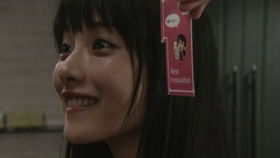Title: Embracing Chinas Rich Cultural Heritage through Fashion: The Beauty and Significance of Chinese-Style Womens Clothing
China, a nation with a history spanning over 5,000 years, boasts a rich and diverse cultural heritage. One aspect of this heritage that has gained immense popularity in recent times is Chinese-style women's clothing. These outfits are not only aesthetically pleasing but also hold deep symbolic significance, representing the values and traditions of ancient China. From the flowing silk dresses of the Han Dynasty to the intricate embroidery of the Qing Dynasty, each style reflects the unique characteristics of different periods in Chinese history. The use of vibrant colors, ornate patterns, and delicate craftsmanship further elevates the beauty of these garments. Furthermore, wearing traditional Chinese clothing has become a way for individuals to connect with their cultural roots and express their identity in a globalized world. In an era where cultural diversity is celebrated, the embrace of China's rich cultural heritage through fashion is a testament to the enduring power and significance of tradition.
In recent years, there has been a notable resurgence in the popularity of traditional Chinese clothing, known as hanfu, among women all around the globe. Hanfu, which dates back thousands of years to the Zhou Dynasty, represents a unique blend of grace, elegance, and cultural significance that has captivated fashion enthusiasts and history buffs alike. This trend towards Chinese-style women's clothing, or huaqun, is a celebration not only of aesthetic beauty, but also of China's rich cultural heritage.
The appeal of huaqun lies in its intricate designs, vibrant colors, and exquisite craftsmanship. Each piece is a work of art, featuring patterns inspired by nature, mythology, and historical events. From the flowing lines of a silk cheongsam to the bold geometric motifs of a qipao, huaqun offers a wide range of styles to suit any occasion and personal preference. Moreover, these clothes are not merely decorative; they embody the values, beliefs, and traditions of Chinese culture. By donning huaqun, women can connect with their heritage in a meaningful way and express their identity through fashion.

One reason for the growing popularity of huaqun is its ability to transcend cultural boundaries. As China continues to assert itself as a global superpower, more and more people are interested in learning about its history and culture. Huaqun provides an accessible window into this world, offering a glimpse into a civilization that spans millennia. By wearing huaqun, women can bridge the gap between different cultures and promote cross-cultural understanding and appreciation. Furthermore, huaqun serves as a symbol of resistance against globalization and consumerism, inspiring women to reclaim their cultural identity and reject Western ideals of beauty and style. In this sense, huaqun becomes a tool for empowerment and self-expression.
However, the rise of huaqun is not without controversy. Some critics argue that huaqun is too exotic or impractical for modern life, lacking comfort and functionality compared to Western clothing. Others worry that promoting traditional Chinese clothing on a global stage may lead to the loss or dilution of its distinctive characteristics, as it becomes co-opted or commercialized by outside forces. Despite these concerns, many advocates for huaqun remain optimistic about its future prospects. They argue that by embracing our cultural heritage and sharing it with others, we can enrich our own lives and contribute to a more diverse and harmonious world.

In conclusion, the trend towards Chinese-style women's clothing represents a fascinating fusion of aesthetics, history, and culture. Through its intricate designs and vibrant colors, huaqun offers a window into a world of beauty and symbolism that has captivated audiences for millennia. Whether worn as a statement of identity or as a means of promoting cross-cultural understanding, huaqun embodies the spirit of resilience and creativity that defines the human experience. As we continue to navigate the complexities of the modern world, let us embrace our past and present with open hearts and minds, and celebrate the richness and diversity of all cultures.
Articles related to the knowledge points of this article:
Title: Should Men Wear Ties to Their Wedding?
Versatile Down Jackets: A Fashion Staple for All Seasons
Title: The Art of tie Knots: An Exploration of the Countless Ways to Tie a Necktie
Title: Elegant Deer羽绒服女,时尚与实用的完美结合



